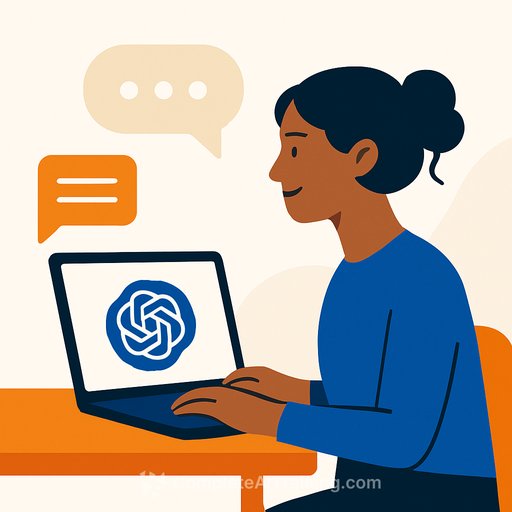Writers Are Using ChatGPT Mostly for Writing - Not Code. Here's What That Means for Your Workflow
A new analysis of real, anonymized ChatGPT prompts from individual users (Free, Plus, and Pro) shows a clear pattern: research and writing dominate usage. Personal requests surged from 53 percent to over 70 percent during May 2024-June 2025, while work-related use also grew.
For writers, the signal is obvious. People are leaning on ChatGPT as an editor, fact-finder, and thinking partner far more than as a code generator.
What People Ask For Most
- Seeking Information: e.g., pulling qualifying times for the Boston Marathon.
- Practical Guidance: e.g., building a training plan for that race.
- Writing: emails, documents, and heavy lifting on editing, critiquing, summarizing, and translating.
Writing is the standout. At work, it accounts for about 40 percent of use - and nearly two thirds of those requests are editing, critique, or translation. Most people still write first, then ask the model to improve it.
How Requests Are Framed
- Asking (information or clarification): ~49 percent
- Doing (produce an output): ~40 percent
- Expressing (share a view/feeling): remainder
In work contexts, Doing jumps to 56 percent - and almost three quarters of those tasks are Writing.
Writing Is Universal Across Jobs
When mapped to the U.S. Department of Labor's O*NET work activities, about 81 percent of work-related messages align to two buckets: obtaining/documenting/interpreting information, and making decisions/giving advice/solving problems/creative thinking. That pattern is consistent across occupations.
Coding Isn't the Main Play Here
Only about 4.2 percent of input in this sample involved programming, despite other research showing a higher coding share on competing tools. For writers, that tracks: the biggest gains show up in research, draft refinement, and decision support.
Who's Using It
- Gender mix shifted from ~80 percent masculine names early on to ~48 percent by June 2025.
- Over half of adult messages came from users under 26.
- Educated, higher-paid professionals are much more likely to use ChatGPT for work.
How Writers Can Use This Data Right Now
Treat ChatGPT as an editor and research assistant
- Draft first; ask for targeted edits (clarity, tone, structure, bias removal, fact gaps).
- Request critiques with line-by-line suggestions and "before/after" examples.
- Use it to summarize sources, outline angles, and pressure-test arguments.
- Translate with instructions to preserve tone and formatting.
Prompt patterns that work
- "Edit for clarity at a [grade level], keep my voice, cut redundancy, and show a diff of changes."
- "Critique this article for logic gaps, weak transitions, and jargon. List fixes by section."
- "Summarize these notes into a tight outline with headline options and CTA variations."
- "Translate to [language], keep sentence length and rhetorical style similar."
- "Create a fact-check plan: list claims, likely sources, and missing data."
Workflow tips
- Separate roles: Research → Outline → Draft → Edit → Polish. Use distinct prompts for each stage.
- Use constraints: word count, tone, audience, reading level, must-include facts, must-avoid phrases.
- Protect client data: avoid pasting sensitive material; summarize or mask where possible.
- Benchmark your voice: feed 2-3 of your published pieces and ask the model to define your style guide, then reuse it.
For deeper practice
Bottom Line
The data shows people use ChatGPT as an advisor and research assistant more than a task-doer. For writers, the sweet spot is clear: decision support, stronger drafts, faster edits. And with massive infrastructure bets underway, expect more capacity - but the advantage goes to those who build a disciplined, prompt-driven writing system.
Your membership also unlocks:






